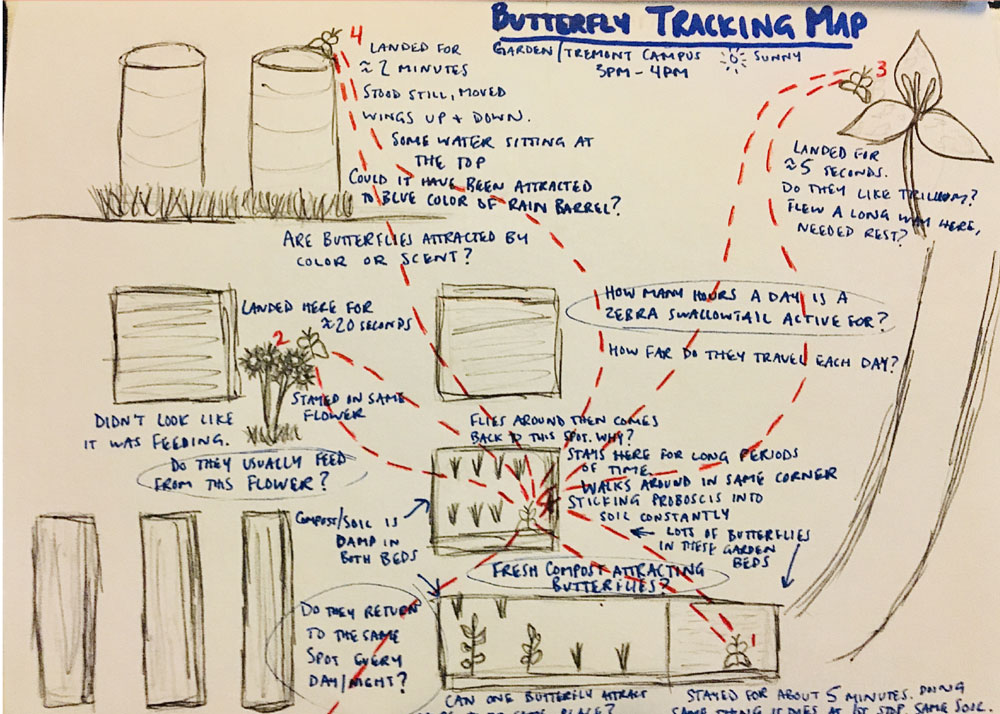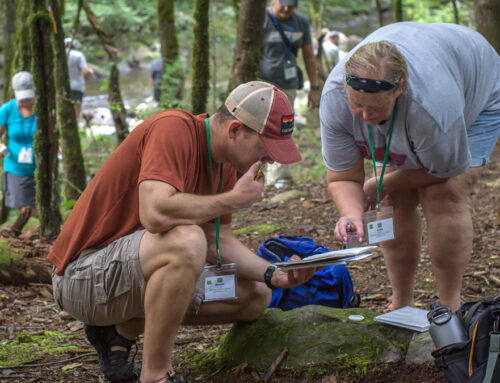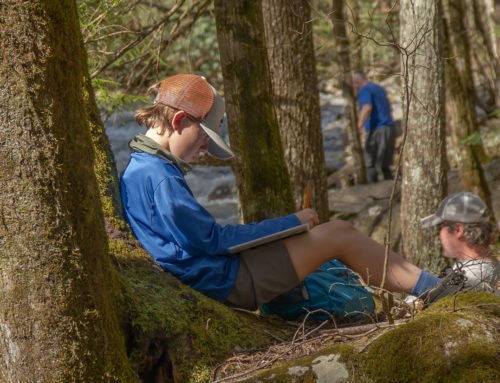Journaling Tips
- Don’t worry about what your map and sketches look like. Spend more time watching your insect and recording your observations and questions.
- Use different colors for mapping, observations, and questions to create some structure.
- Use arrows and lines to connect observations to sketches and specific points on your map.
Getting Your Map Started
Start by recording a few landmarks (rocks, plants, human-made objects, etc.) that are near your insect so you have something to build off of.
Mapping Flying Insects
When making a tracking map of a flying insect, you may find it easier to map and record the places it lands, rather than mapping everywhere it flies like in the example to the right.
Activity Outline
There are insects we see all the time around our homes and parks, but we generally don’t stop and observe them. This activity encourages you to slow down and notice what our little neighbors are up to and maybe learn something about the life of insects!
- Go out and search for an insect (or arachnid) that you would be able to follow and observe for a while.
- Observe and follow your insect without disturbing it. Use your journal to create a map of where your insect travels, adding sketches of your insect or locations along with any observations about it’s behavior and questions you have. Example below:

- Keep observing your insect for about 15-20 minutes or until it goes somewhere you can’t follow. Add any last observations to your map.
- Reflect on these questions and write your responses in your journal.
- How did it feel to observe and focus on one insect for a while?
- Did you notice anything about this insect that you hadn’t noticed before? Or notice something that surprised you?
- Did you learn anything about this insect by watching it?
- What are you still curious about?


![A Deep Dive Into Wetlands [Free Lesson Plan]](https://gsmit.org/wp-content/uploads/2024/02/madeline-blog-cover-500x383.png)
![Are You a Math and Science Person or a History and English Person? [Free Lesson Plan]](https://gsmit.org/wp-content/uploads/2024/01/Girls-in-Science-Erin-Rosolina-3-1-500x383.jpg)


